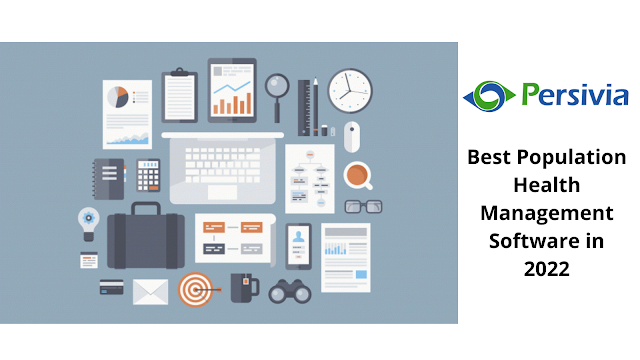Best Population Health Management Software in 2022
The healthcare ecosystem is pursuing its Value-Based Care approach to increase care quality and outcomes while lowering costs. These attempts to attain the Triple Aim are driven by Population Health Management (PHM) practices.
Healthcare
professionals utilize Population Health Management Platform to
design treatment plans better, track healthcare outcomes, and generate
quantifiable enhancements in a group's healthcare outcomes.
Population Health
Management Software
The most
effective Population Health Management technologies integrate
clinical, financial, and operational information to produce substantial
healthcare analytics for practitioners to increase performance and care
delivery. Successful Population Health Management necessitates competent care
administration, risk management, and an efficient delivery process.
A PHM software
typically fits the Population Health Management Platform's
following criteria:
- Provide care coordination tools to practitioners.
- Lead to increasing patient participation.
- Evaluate health records to detect, track, and monitor
patients, treatment procedures, and diseases.
- Make data interchange between EHRs and other record
databases easy.
Innovative Population
Health Management Software in 2022
Efficient and
productive Population Health Management Platform accumulates
data from several healthcare settings, stores patient information for analysis,
and manages care quality across the population by employing advanced analytics.
However, to overcome
new challenges in the healthcare industry in 2022, healthcare organizations and
providers will need augmented Intelligence, Internet of Things (IoT),
patient-portal, wearable technologies data, and information from multiple
sources other than EHRs to reinforce structural, data-driven decision-making.
Augmented Intelligence
Healthcare leaders
will rely on Augmented Intelligence to steer their decisions to prevent the
severe risk of flawed, contradictory, and ambiguous interpretation of medical
files. The sophisticated algorithms will make data accessible and
understandable.
Augmented
Intelligence has the potential to
expose previously hidden insights. It will improve the accuracy, consistency,
transparency, and accessibility of insights to promote organizational,
real-time decision making.
Internet of Things,
Patient Portal and Wearables Data
Telehealth
necessitates the development of a data approach that integrates new IoT,
patient portals, wearables data, and the governance and orchestration necessary
to incorporate this data into care delivery.
While organizations
have moved to the cloud, new storing and curation requirements are propelling
the rise of the data "lakehouse," a hybrid of contemporary and
existing abilities that can govern and orchestrate data.
Info Not Found in EHRs
As a result of a shift
in financial risk to providers and legislative reforms, access to data and
products is rising, and information asymmetry is lessening. Consequently, population-based
data becomes more critical.
With this accurate
data, population health professionals will bend the cost curve in spots ripe
for disruption, such as the nexus of behavioral health and chronic conditions.


.png)
Comments
Post a Comment
Please do not enter any spam link in the comment box